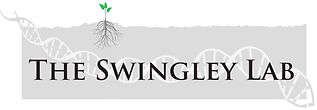
MICROBIAL DARK MATTER
The deep roots of the tree of life
One major outcome of the rapid increase in output and decrease in cost of DNA sequencing is the increasing awareness of the vastness of microbial diversity that extends well beyond what has been revealed by traditional microbial cultivation. Most recent estimates put the number of cultivated microbial lineages at far lower than 1% of the phylogenetic diversity we know to exist on this planet. This vast diversity of poorly-described life represents an enormous genetic reservoir that has been called “biological dark matter” to call attention to our profound ignorance of such a large proportion of our biosphere. In recent years, large scale efforts coordinated through the Joint Genome Institute (JGI) have sought to illuminate this dark matter by generating sequence data from extreme and unique environments that contain large concentrations of these often deeply-branching microbial lineages.
I began my first exploration of microbial dark matter in 2011 through a NASA-funded research project coordinated by Brian Hedlund at the University of Nevada, Las Vegas. This collaboration has led to two peer-reviewed publications (Dodsworth et al., 2013; Becraft et al., 2016), with another currently in review (Becraft et al., 2017), through my lab and numerous others across the broader collaborative team. Each of these publications has provided physiological and metabolic insight on previously uncultured members of hot spring microbial communities by analyzing their genomes (or community genomes) taken from a variety of hot springs across the globe. Most excitingly, the first genome published through this project (Dodsworth et al., 2013) has led to subsequent cultivation of one of these dark matter microbes, by leveraging the computational analysis of its potential metabolic needs to better inform medium and environmental conditions for growth. This genome-informed cultivation is a key goal of microbial dark matter sequencing projects, with the hope that one day we will be able to grow and biochemically characterize a much larger fraction of our microbial biosphere.
The culmination of microbial dark matter analyses has been driven by a joint effort between Bigelow Laboratory for Ocean Sciences, the JGI, and NSF’s GoLife initiative to provide environmental metagenomes and single-cell genomes across dozens of diverse locations with the goal of filling out the tree of life. My lab has contributed samples for this effort and we are just now beginning to dig into the wealth of data provided by this initiative. One of my primary interests in this project is the analysis of dark matter and other microbial clades found in a highly alkaline environment. This environment will provide a unique perspective for the dark matter project, as its geochemistry differs drastically from any of the other target locations.
Project Description
Relevant Publications
Becraft, E.D. Dodsworth, J.A., Murugapiran, S.K., Ohlsson, J.I., Hedlund, B.P., and Swingley, W.D. (2017) Genomic Comparison of Two Family-Level Groups of the Uncultivated NAG1 Archaeal Lineage from Chemically and Geographically Disparate Hot Springs. Front Microbiol. 8, 2082.
Becraft, E.D., Dodsworth, J.A., Murugapiran, S.K., Ohlsson, J.I., Briggs, B.R., Kanbar, J., De Vlaminck, I., Quake, S.R., Dong, H., Hedlund, B.P., and Swingley, W.D. (2016) Single-Cell-Genomics-Facilitated Read Binning of Candidate Phylum EM19 Genomes from Geothermal Spring Metagenomes. Appl Environ Microbiol. 82, 992-1003.
Dodsworth, J.A., Blainey, P.C., Murugapiran, S.K., Swingley, W.D., Ross, C.A., Tringe, S.G., Chain, P.S.G., Scholz, M.B., Lo, C.-C., Raymond, J., Quake, S.R., and Hedlund, B.P. (2013) Single-cell and metagenomic analyses indicate a fermentative and saccharolytic lifestyle for members of the OP9 lineage. Nat Commun. 4, 1854.

